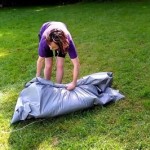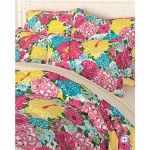Deer Bedding Areas In Florida USA
Deer, an integral part of Florida's diverse ecosystem, are known for their elusive nature and adaptability. Understanding their behavior, particularly where they choose to rest and sleep, is crucial for both wildlife enthusiasts and those seeking to manage deer populations. Bedding areas, the safe havens where deer seek refuge, are essential for their survival and provide valuable insights into their daily activities. This article delves into the key aspects of deer bedding areas in Florida, exploring their characteristics, common locations, and the factors that influence their selection.
Factors Influencing Deer Bedding Area Selection
Deer are meticulous in choosing their bedding areas, primarily driven by the need for concealment, security, and comfort. Several factors influence their selection:
- Cover: Dense vegetation provides essential concealment from predators and human activity. Thickets of palmetto, sawgrass, and hardwood hammocks offer excellent cover, enabling deer to remain hidden and safe.
- Terrain: Deer favor areas with gentle slopes, providing good visibility and escape routes. They often choose locations with elevated ground, offering a vantage point to survey the surroundings.
- Wind direction: Scent plays a crucial role in deer survival, and they strategically position themselves downwind from potential threats. This allows them to detect approaching predators or humans early on.
- Water sources: Proximity to water sources is essential, particularly during dry periods. Deer need easy access to water for drinking and regulating their body temperature.
- Food sources: Bedding areas are often located near food sources, minimizing the distance deer need to travel for nourishment. This helps them conserve energy and avoid unnecessary exposure.
Common Locations of Deer Bedding Areas
While deer are adaptable, their bedding areas are not randomly chosen. They tend to favor specific habitats based on the aforementioned factors:
- Hardwood Hammocks: These dense, shaded areas with towering trees offer excellent concealment and protection from the sun. The understory of these hammocks provides ideal bedding conditions, with ample cover and a sense of security.
- Palmetto Thickets: Palmetto fronds provide dense, impenetrable cover, making these areas popular for deer bedding. The thorny nature of palmetto also acts as a natural barrier, deterring predators.
- Sawgrass Marshes: The dense, tall sawgrass in these marshes offers excellent concealment, especially in areas with scattered patches of hardwood trees. These areas also provide access to water and food sources.
- Streambanks and Swamps: The vegetation along streambanks and in swamps offers excellent cover and proximity to water sources, making these areas attractive to deer.
- Forest Edges: The transition zones between forests and open areas provide a balance of cover and visibility, offering deer a safe and strategic location to bed down.
Identifying Deer Bedding Areas
Recognizing deer bedding areas requires a keen eye for subtle signs. Experienced observers can identify these areas by looking for:
- Depressed vegetation: Deer beds are often marked by flattened or trampled vegetation, indicating repeated use. The area may also show signs of leaf litter rearranged or removed, creating a shallow depression in the ground.
- Feces and urine: Deer leave behind feces and urine as markers of their presence, particularly in bedding areas. The presence of these "scat" can be a strong indicator of regular deer activity.
- Trails: Deer trails, often leading to and from bedding areas, are another sign of frequent use. The trails are typically narrow and winding, following natural contours and vegetation.
- Rubs and scrapes: Deer use rubs to mark their territory and attract mates. The presence of rubs and scrapes, often located near bedding areas, can indicate active deer activity.
Understanding deer bedding areas is not only essential for scientific research and wildlife management but also for those seeking to observe or hunt deer. By recognizing the factors influencing their selection and the telltale signs of their presence, individuals can gain a deeper appreciation for the intricate lives of these fascinating creatures and contribute to their conservation efforts.

Scouting Deer Bedding Areas Locating Creating And Observin North American Whitetail

Scouting Deer Bedding Areas Locating Creating And Observin North American Whitetail
How To Hunt Whitetail Deer In Each Phase Of The Rut Florida Sportsman
How To Hunt Whitetail Deer In Each Phase Of The Rut Florida Sportsman

Scouting Deer Bedding Areas Locating Creating And Observin North American Whitetail

You Know Where That Buck Beds Huh Nda

Where Do Deer Sleep Field Stream

Should You Hunt Buck Bedding Areas Bowhunter

The Complete Guide To Florida Deer Hunting Season

Where Do Deer Sleep Field Stream








